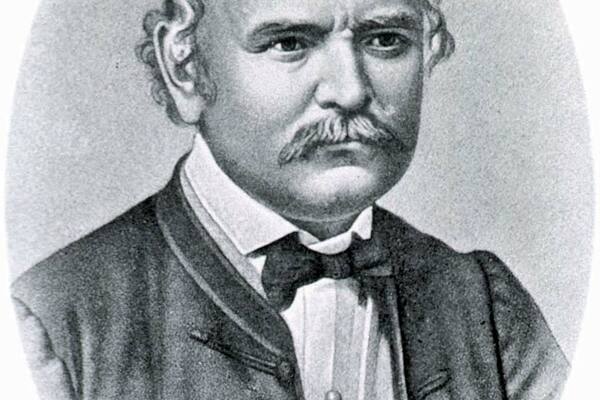Since last March, two main factors/ elements took over the lives and daily routines of the global population: a threatening pandemic and the simple act of handwashing. We wish that one of them never came into our lives and one of them never left and, hopefully, it is easy to distinguish which is which. Undoubtedly, handwashing should not be seen as a debatable situation or a hit and miss action. In fact, in today’s society, the benefits of washing our hands are considered bare knowledge and anyone can agree that it is one of the most crucial tools in public health and preventing healthcare.
But, to our surprise, it has not always been this way. Handwashing was once never thought about or in a best-case scenario, underestimated. This changed after a Hungarian doctor named Ignaz Semmelweis, made a historical discovery when looking into the countless numbers of women and new-borns dying from puerperal fever, also known as childbed fever. During the 18th and 19th century, it had become a very common postpartum disease, which was caused by an infection.
Semmelweis wanted to investigate further into the case, so he started collecting data of his own, trying to get a better picture of what could be the cause of the disease. He mainly focused on two maternity wards at the General Hospital in Vienna, with the main difference being that one of them was staffed entirely by male doctors and medical students, while the other one was staffed by midwives. Analysing the number of deaths in each ward, Semmelweis discovered that a much larger number of women had died in the clinic where male doctors worked, rather than the clinic consisting entirely of midwives. Reasonably, there was only one question: Why?
In order to get answers, he started making different hypotheses, conducting further research regarding the disease, comparing the ways that women gave birth at the midwives’ ward versus the doctors’ ward. He even analysed the possible deadly influence that priests had when walking in the doctor’s clinic after another loss from childbed fever. None of these theories were actually considered effective or logical, so Semmelweis had to continue researching, trying to solve the mystery and save the lives of countless women and new-borns.
After some time had passed, with no results, he was informed about the loss of one of his doctor friends, because of the disease. His friend was a pathologist and doing autopsies was part of his everyday life at the hospital. Not to our surprise this time, he got infected after having touched someone who had died from childbed fever. After studying the symptoms of his friend, Semmelweis came into the conclusion that he had the same disease as numerous women before him, the first sign that could lead him to a possible discovery.
At first, Semmelweis created a hypothesis and wanted to see if it could be true. He claimed that doctors who had touched someone infected by the disease and then helped women deliver their babies, were the ones who could possibly be transmitting it. So, he urged the staff to wash their hands, not just with soap, but with chlorine, which, according to him, was the best way to get rid of unwanted types of smell from the corpses. As a result, the number of deaths was radically decreased, and the rate of childbed fever fell dramatically.
However, as history has shown through the years, such a big and life-altering change could not come with no complains or criticism. Doctors were upset because what Semmelweis had found made them look like they were the ones causing the disease and, to their eyes, instead of helping women live, they had achieved the complete opposite. Semmelweis, on his part, was not handling the situation in a diplomatic way, since he became very aggressive with people who disagreed with him and thus, managed to create a circle of influential enemies. Unfortunately, doctors slowly started giving up the hand-washing tactic and Semmelweis, at the age of 47, was committed to a mental asylum.
It is only after his death, many years later, with the development of theories regarding germ diseases and advances in the field of antiseptics, when Semmelweis’ discovery was finally accepted by the public and medical world. Since then, handwashing has always been considered one of the main and most basic ways of preventing the transmission of various diseases and viruses through interpersonal communication. What Semmelweis discovered is an act that should never be forgotten or overlooked, since it has played an essential role in the development of medicine and public health throughout the years.
References
Davis, R. (2015). The Doctor Who Championed Hand-Washing and Briefly Saved Lives. National Public Radio. Retrieved October 27, 2020, from: https://www.npr.org/sections/health-shots/2015/01/12/375663920/the-doctor-who-championed-hand-washing-and-saved-women-s-lives
Flynn, M. (2020). The man who discovered that unwashed hands could kill -- and was ridiculed for it. The Washington Post. Retrieved October 27, 2020, from https://www.washingtonpost.com/nation/2020/03/23/ignaz-semmelweis-handwashing-coronavirus/





